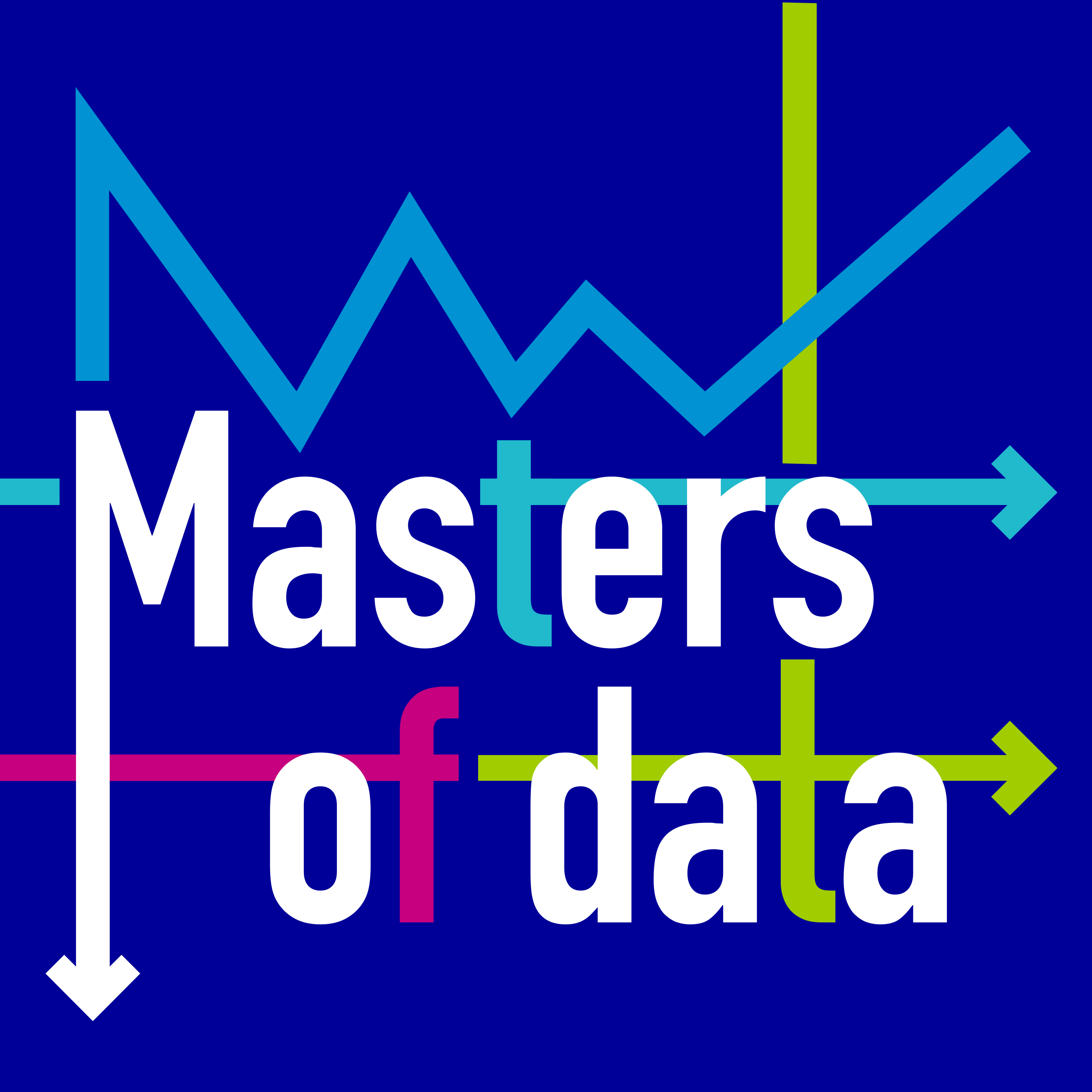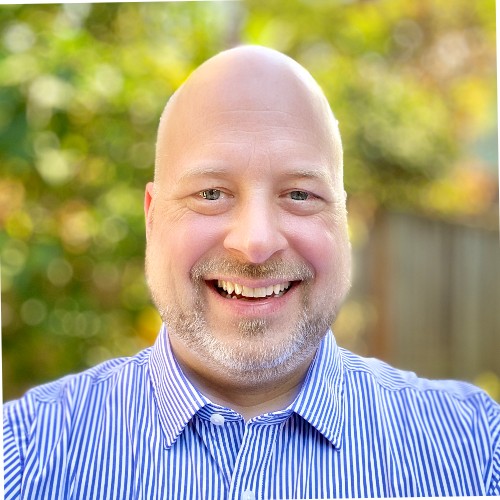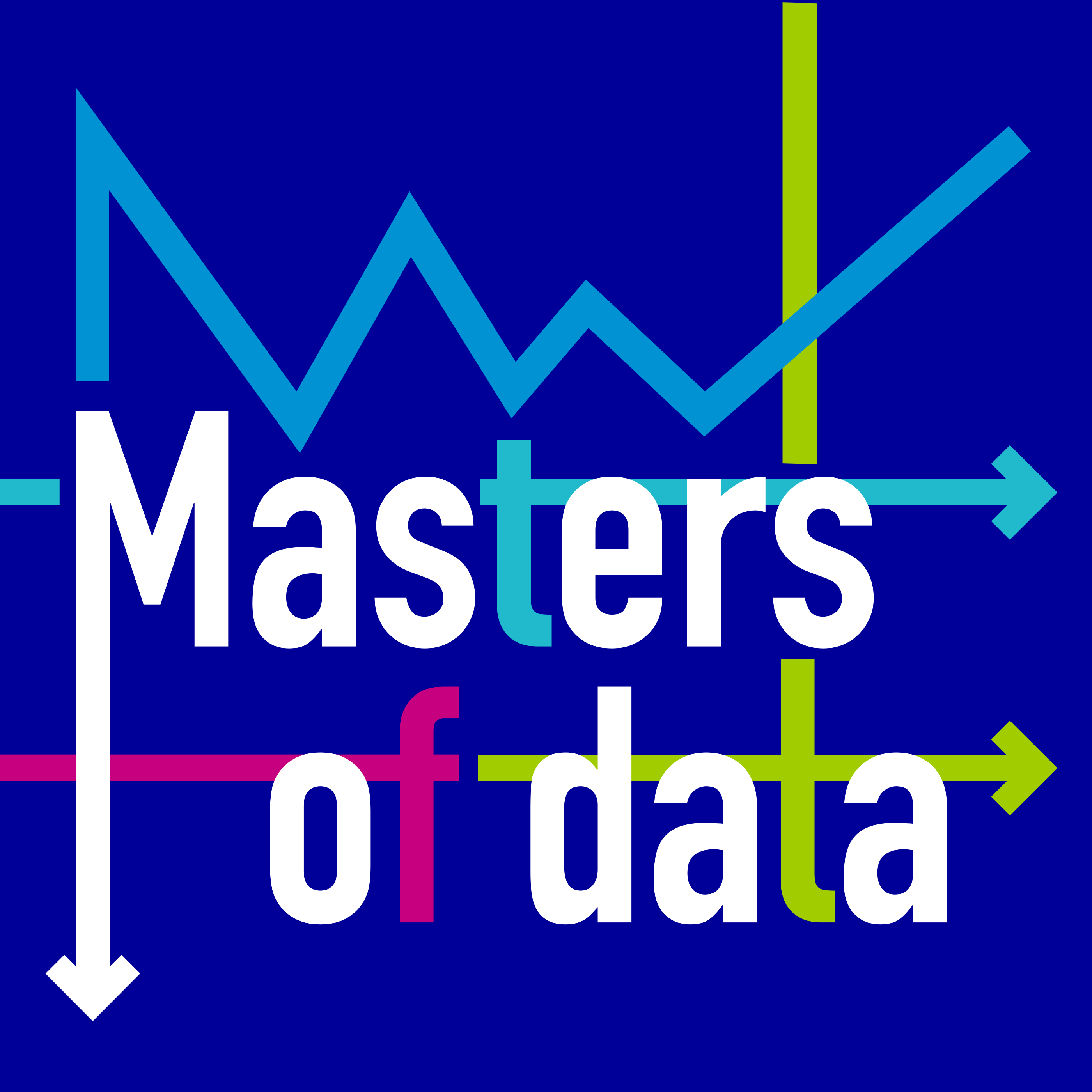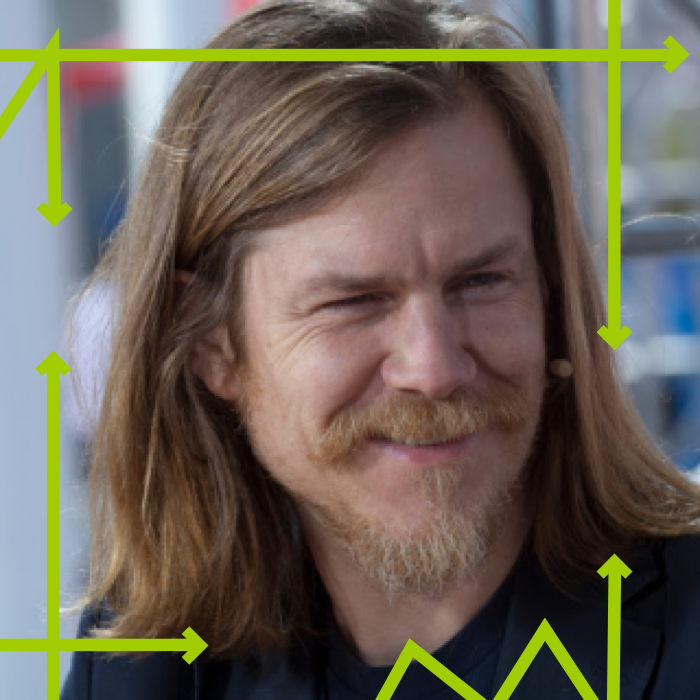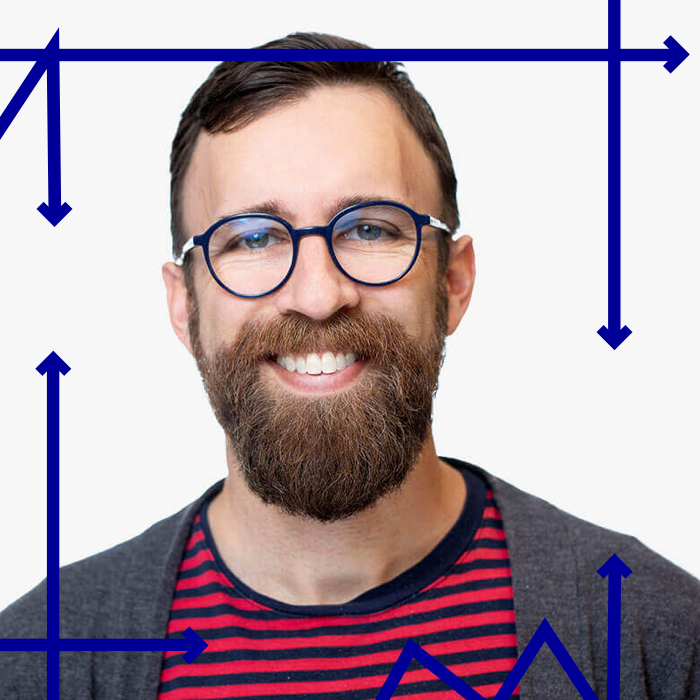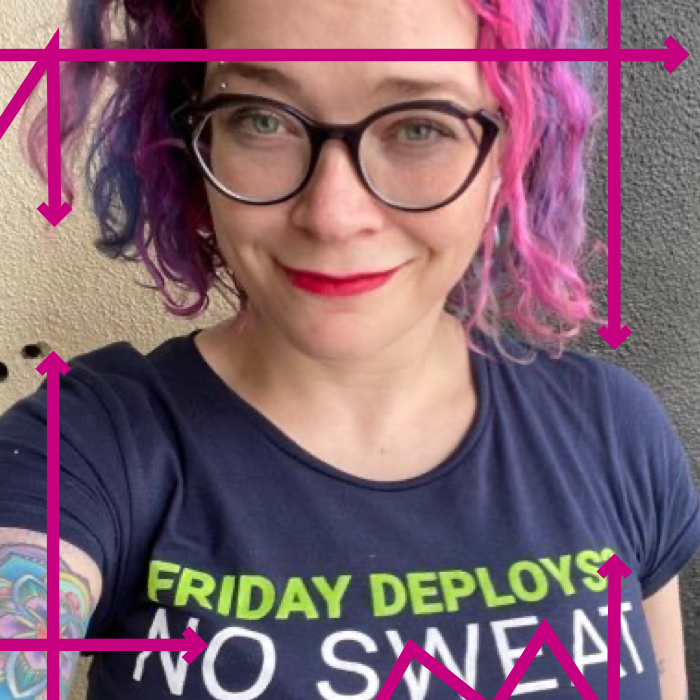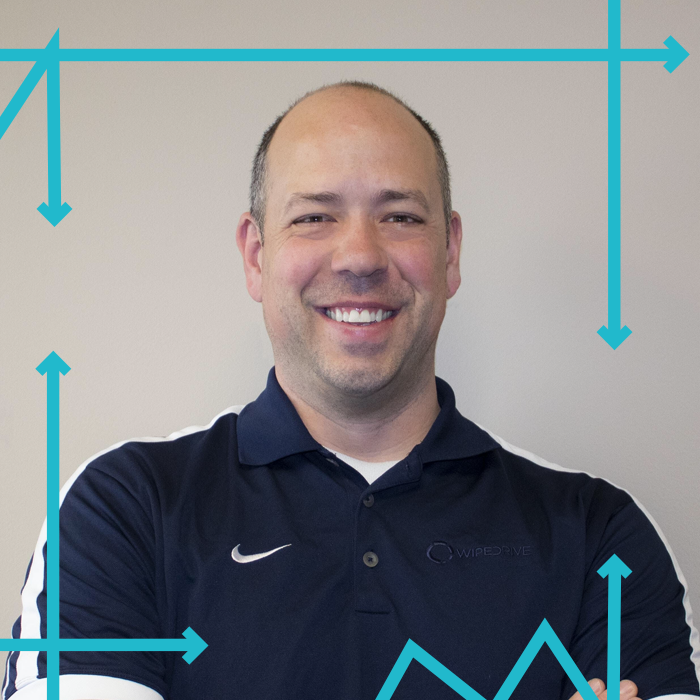How to Build a Data Science Team (Guest: Jorge Lozano)
- 0.5
- 1
- 1.25
- 1.5
- 1.75
- 2
Masters of Data - How to Build a Data Science Team - With Guest Jorge Lozano
Transcription
Ben Newton: Welcome to the Masters of Data podcast, the podcast that brings the human to data. And I'm your host, Ben Newton. One of our recurring themes on this podcast is the application of data in the real world, and how data science is adapting to the needs of the businesses that it serves, this episode is a perfect example of that. Jorge Lozano leads the data science team at Steelcase. Steelcase was founded over a hundred years ago and is the largest office furniture manufacturer in the world. So what does a company like Steelcase do with data and data science? Let's find out. Hey, welcome everybody to another episode of the Masters of Data podcast, and I'm your host Ben Newton and we have a really interesting guest today. I think this is going to make for a great conversation, we have Jorge Lozano, he's from Steelcase, he leads the data science team there. Welcome Jorge, it's good to have you here.
Jorge Lozano: Hey Ben, thank you for having me, such an honor to be on the podcast.
Ben Newton: Absolutely, absolutely. And I think this is going to be a really good discussion and I think, and I want to talk a little bit about your background and also about Steelcase, and I mean just to start it off with a little bit of introduction. I mean Steelcase is one of the world's leading furniture manufacturing companies, so this is typically not, you would hear that and data science in the same word, same sentence, so I think that, that's going to be really exciting. But even before we get to that, Jorge, I would always ask every single guest that I bring on, what's your story? How did you get to where you are? I looked in... I told you a little bit on LinkedIn and looked at your background, and I mean you've got a background in economics and actuarial science, so how did you end up in data science? What kind of attracted you to that area?
Jorge Lozano: Yeah, as you mentioned, I started my career, I did my undergrad in economics, and fresh out of college I did some business consulting. But I think very soon I realized that I wanted something that was a little bit more quantitative, and I switched roles, joined Steelcase back in 2011, the office that they have here in Monterrey, Mexico, and my focus was on pricing analytics. And one thing you should know about this industry is that it has a very complex pricing structure.
Ben Newton: Yeah.
Jorge Lozano: The role was one of the few early formal roles that would focus on analytics that were outside of the typical finance role that would analyze either costs or sales and things like that, and we had an amazing set of breakthroughs. I think that was my first formal, I would say data science role, but back then we didn't really call it data science, it was still not as prevalent or as well defined as it is right now. But I think we had such a tremendous success, it was the perfect role to start a data science career for me and really understand that, that was one of my passions. I had a very engaged leader at that time that was willing to take risks, and we just had a natural ability to communicate things at the same level. He was learning stuff about statistics and math and modeling, and I was challenged on learning things about the business and the pricing structure, so we were both challenging each other to meet halfway and that was a very powerful way to understand how to make data science work for a team and for an organization.
Ben Newton: Yeah.
Jorge Lozano: I did a graduate degree in actuarial science in 2013 in Iowa, go Hawks, and was drawn back to Steelcase because the culture there is so amazing. Even though I did do a lot of formal actuarial science education, I finished five of the preliminary exams to become an associate. At the end of the day I was really drawn to the organization and the culture there and some of the challenges and things like that.
Ben Newton: Yeah, that's super cool. Let's talk a little bit, because I want to come back to talk a little bit about the data science side at Steelcase and what your experience was there, particularly what that looked like. Let's talk a little bit about Steelcase because I... to give people kind of an intro to the company. Because the one thing, I don't think we even talked about this before, but your furniture does have a, let's say special place in my heart because I come from North Carolina, which you used to be one of the... still has a lot of furniture background.
Ben Newton: And my granddad actually worked for years for Drexel. So, I grew up being taught how to... I have my own little pens and stuff like that to fix blemishes on furniture. And I was taught literally from kindergarten how to do that. I still have my own, I actually pulled them out the other day. So it's, I've got a table that my granddad made at the factory and I've always thought that's really neat. And so tell me a little about Steelcase itself. I mean, what does Steelcase look like today? Because I mean it's a pretty modern manufacturing company. What does that look like?
Jorge Lozano: Yeah. Yeah, yeah, yeah. Because we're a brand that does not typically market to consumers, we often tend to go under the radar for a lot of people. However, we're a 108-year-old furniture company based in West Michigan with offices and facilities all across a world close to 13,000 employees.
Ben Newton: Wow.
Jorge Lozano: And there's two things that I want to point out about Steelcase. The first thing is, it's just such an amazing place to work. It really is my second family, I have amazing mentors, peers, teammates. We actually made the list of Fortune's most admired companies for 2019-
Ben Newton: Really?
Jorge Lozano: ... in second place for a broader industry related category.
Ben Newton: Oh, that's great. Congratulations.
Jorge Lozano: Yeah. And we got a perfect score on corporate equality index. So really a great place to work, a great place to really bring the best out of people, that's one thing. But the second thing that I really want to mention about Steelcase that it's important for folks to know, is that we do not really think of ourselves as an office furniture manufacturer, our winning aspiration is to be able to unlock human promise by creating great experiences wherever work happens. And it sounds magical, but the idea is that we have a strong culture of innovation and research-based design. And we want to become not a supplier, but a business partner that really helps organizations leverage space as a strategic asset, because we believe that what we're bringing into the table is not just a physical object, but something that will enable people to work better depending on the type of work that they're doing.
Ben Newton: Oh, now that's really cool. I remember when I saw that, I think that's a... particularly considering all the changes in office life these days, that's a really important part of it. One thing, when you and I were first introduced, we talked about how your guys' office is basically a showcase, right?
Jorge Lozano: Yes. So, a lot of the spaces in most of our offices are meant to be a display of how our product applications can come together to deliver us solutions. So we have customers all the time in all of our offices.
Ben Newton: What's that like? Do you get to try out new things all the time?
Jorge Lozano: Well you get really nice furniture, that's for sure. There are times where people start taking photos and you feel awkward that somebody's going to have you on their phone, but you get used to it.
Ben Newton: It's just part of what you signed up for, right?
Jorge Lozano: Yeah. And then as the data scientist, you pull up like a very complex graph or something and people, "Wow." And they want to try to capture the moment, so you feel like you did a trick for them, so.
Ben Newton: I like that. Well, I mean getting back into the data science thing, and I appreciate you setting kind of the context there is that you thinking about yourselves as more than just making office furniture. You're making spaces and actually making businesses more productive and more innovative. So, okay, so maybe that tells a little bit why Steelcase would care about data science, but talk more about that. I mean, why does Steelcase care about data science enough to invest in somebody like you and your team?
Jorge Lozano: I think one of the main reasons is that over the last few years, more and more people are understanding that a digital transformation of an organization is not really an option, but a requirement for survival. So we keep thinking to ourselves, we keep asking ourselves, "How are we embracing, adopting, empowering, the use of these emerging technologies to keep being relevant, to stay in the fight?"
Ben Newton: Yeah.
Jorge Lozano: And if we think about data science practices at Steelcase, there's two main areas. One of the areas is data science that's focused more on running the business, the maybe more traditional process improvements, data-driven decision making, better forecasts, we refer to this team as the advanced analytics team. And that team is led by my peer, Brian [Flestra 00:08:47], who's such a smart guy, he's a former air force pilot with an advanced degree from MIT, I mean, that guy's the real deal. And so that's one lens.
Ben Newton: Mm-hmm (affirmative).
Jorge Lozano: The team I lead focuses on data science to support product innovation and customer experiences. And a lot of this is the result of the rise of IOT, for example. Because IOT opened up the possibility for a lot of people to start thinking about applications of this technology in really different places, like the workplace. And Steelcase has a portfolio of products and services that provide consumers, things like room booking devices, media sharing, but my favorite, workplace analytics. And think about this Ben, firms spend literally millions of dollars on their space, in furniture and real estate. And understanding how their space is being used and most importantly, what they should change about their space to improve the way they work is so valuable. So, we constantly have customers asking us to help them understand what their space needs to look like. So this creates really a conundrum, because we try to collect more data to better understand, but the more data, the greater the need for sense-making and translating this into actionable insights.
Jorge Lozano: And I don't think anyone has mastered the capture and use of big data in the workplace yet. There's a lot of potential different applications all the way from automating a work, a day in work experience, but also really providing the, we call this in Steelcase, focusing on the user or the chooser. You can think of the chooser as being a facilities manager, someone that's going to make strategic decisions about what the space needs to look like, where as a user would be the regular worker who actually ends up using the space. So how do we master a system of data that can really provide transformational experiences for both? And I think Steelcase is really well positioned to lead in this, if we can understand how to bring data. We have 108 years of experience on research and insights that can allow us to build strong prescriptions, if we have a very solid, scalable way of understanding the diagnostics. Do you know what I mean?
Ben Newton: Yeah. No, and it makes a lot of sense. Well, I mean, even getting a little bit on the details, I mean, what does it actually mean to gather data about a workspace? I mean is this actual, because when you say IOT, are these things that are built into like furniture or cameras or what does that actually look like in your world?
Jorge Lozano: Well, there's different dimensions of this. We can do things that are extremely simple, like just measuring whether a space is occupied or not. Obviously that can help us understand certain things about that desirability of a space, whether there's people gravitating towards it, et cetera. The journey doesn't really stop there. We can go and then measure whether the space is being used efficiently, and from a real estate perspective, if it's a meeting room for 20 people and you only ever have two people sitting there, then you're probably missing out on your real estate.
Jorge Lozano: But then there's all these additional layers that dive more into, "Well, if I'm doing this space that is meant for collaboration and I chose to invest in this type of space so that I can get my employees to collaborate, am I really getting those work modes out of this space? And if not, how could I strategically think about changes to the space to really enable these work modes that I'm looking forward to propagating across my floor, across my team," and things like that. And so, there's a lot of different ways that you can measure activity in a space to be able to map these, and that's one of the things that we're more excited about.
Ben Newton: That's super interesting because I was actually reading a... I read a couple of things recently about workspace and there's been a, as there always is, there's these big trends right in, in how you lay out offices and some of the new trends are trying to encourage collaboration by having these open spaces and all this stuff like that. But it does seem like with some of the stuff I've read, that some of the things that are missing is an understanding of whether that's actually what's happening. Because you know, particularly I know I'm very easily distracted, so for me it's was forever the search is someplace where I can actually get stuff done-
Jorge Lozano: Exactly.
Ben Newton: ... as opposed to just collaborating, right? And finding ways to balance that. And it did sound like that's a super interesting problem to go on, it's how can you, not just make it intuition, but tie it to intuition and human kind of EQ with data that actually tells you what's really going on, I think that's pretty fascinating.
Jorge Lozano: Thanks. Yeah. A lot of the decisions of what your setting needs to look like, it's about creating a balance of all these different work modes that need to happen. And often you would think that just having an open space office is enough, but if that really flips the scale to things like focus or other work modes, then you might really be missing spaces that empower employees to really benefit from other types of work modes, like collaboration or learning or even rejuvenating.
Ben Newton: Yeah. Yeah. No, that's super interesting. So, you kind of have this mission of using data to drive innovation and to help your customers, your clients understand how their own space is being used. I mean it sounds really interesting and you're, but you're doing that in, you kind of alluded to this in the beginning, you're doing that in a company that is not necessarily digiting native by default, it's a company with a long history and it's been around for a long time, has been through lots of different changes and now you're being part of this newer change where you're kind of doing that digital transformation as [inaudible 00:14:55]. I mean what does that look like on the ground? I mean, because in some sense it sounds like if, reading between the lines, you guys are a part of that bleeding edge of the digital transformation, so what does that actually look like for you?
Jorge Lozano: That's a great question and I'm glad you brought it up because this getting to where we're at right now has been a journey. It's a very important topic that I often tend to bring up and it's a good bonding moment with some other peers, some other data scientists and other organizations. I've talked to a lot of people from leading organizations and I often find that one of the key things that make us connect on what our challenges and opportunities are as a data science team, has less to do with the size or the budget of the organization, and more to do with the organization's digital dexterity. And what I mean by this is the organization's ability and desire to exploit these emerging technologies to better the business.
Ben Newton: Right.
Jorge Lozano: I think data science practices tend to be very different, projects, technologies, roles, they're not really the same. If we talk about an organization that's digitally native, that was brought up because their soul is a data product, whereas companies that have been doing things for a very long time and they're sort of being forced to change because that's where things are headed. So I think the field in general focuses a lot on the tools and the technologies, but not a lot on the operating model. And I think this operating model varies across the organization, but it was a challenge at first, making sure that we were able to nail a process for Steelcase. And I was very thankful to be invited as a guest speaker at Big Data Ignite in Grand Rapids this past fall, and I shared some best practices that we found to be instrumental in creating a successful data science team in the organization.
Jorge Lozano: And this takes me back when we didn't really have two teams, we just had the advanced analytics team, this is probably five years ago. And the pioneer of this team is my former boss, Tim Merkel, who we really owe a lot for his vision and drive to actually figure it out, right? How does this machine need to operate in order to be successful? Because you get a bunch of really smart guys that can really tackle math problems effectively. But if the right lanes, if the right environment isn't set up, it's very hard to gain traction, it's very hard to make these data science projects pan out.
Ben Newton: Yeah.
Jorge Lozano: So there were all the learnings as we went through that process.
Ben Newton: I think the way that you're thinking about it is really interesting. So I mean, let's talk through it because I know you had a few big things. I mean, honestly I think that's probably one of the things that I know listeners are going to find some of the most interesting thing you could talk about, because I mean you live this and you guys have built a successful team. And being able to... because in some sense what you're talking about is that kind of hype cycle that happens with a lot of new technologies.
Ben Newton: Where there's a lot of excitement, everybody's, "Hey we need to use it," and they go use it and they're, when they look back on it three years, "That was a failure and there was..." it always seems to come back where it was the tool or the people or something like that, and a lot of it has to do with how they've actually been integrated into the company. And it's really... a lot of times it's more of a people, it's more of a people-to-people issue. And so, talk a little bit about that, because I know you had a few really simple learnings from your Big Data Ignite talk, which was super interesting. So maybe just walk us through some of those top line headlines or the things that you learned because I think they're super interesting.
Jorge Lozano: Yeah. One of the first things that I refer to is make sure you know your customer and about... and when I say customer, I don't mean who we sell to.
Ben Newton: Yeah.
Jorge Lozano: If you're a data science team, you have partners, you have people that you're providing a service to, and if you look at them as a customer, you want to make sure that you're understanding what they need, what they would expect from you, and how to work with them. I think it took us... we had to be very intentional about really getting to know their business processes, how they work, how they think, and one thing that would come up was that they didn't really know exactly what to ask from us.
Jorge Lozano: We had two ends of the spectrum, we had people that were asking us to do a couple of Excel spreadsheet pies and bar charts, or we had people that were asking us whether we could build a robot. And so, a lot of people were missing that soft sweet in between, and we needed to change lanes, step out of our comfort zone, understand their business, and then think through, "How am I... I'm going to take the time to understand this person's business problems, and understand how can I translate this business problem into a data problem that will later translate into a solution. A solution that'll either make them more effective at the decisions that they need to make, that will improve their process, and things like that."
Ben Newton: Did you build a robot?
Jorge Lozano: We did not build a robot, unfortunately.
Ben Newton: There's always time.
Jorge Lozano: Exactly. We'll get there. No, another thing that I tend to bring up is, when you are starting in an organization that is new to this area, sometimes the simplest things end up having the biggest impact. And especially for data science, I've found that it's not about having a complex model, it's about having a creative solution, something that people had not thought of before. Every organization is different. Steelcase in particular is very different from maybe retail or some of the other maybe more organizations that have much more things in common. So we really had to think outside the box, we wouldn't be able to open a statistics or data science book and find an example that applied a hundred percent.
Ben Newton: Right.
Jorge Lozano: And so we found that small things like percentiles, linear models, clustering, those kinds of things just within the right context and with the right storytelling, the right visuals, the right systems on it, I mean they can be transformational. And those kinds of things resonate a lot with the end user, so I really challenge people in my team to make sure that they focus on the solution being something that addresses the problem in a creative lens, rather than being very excited about trying this deep learning model and kind of forcing the model on something that might not be the right use case for it.
Ben Newton: Yeah. That's, yeah, because it seems like part of what you're getting at there, is that there's a tendency when you have these really powerful tools at your fingertip, is to come up with complex solutions to simple problems rather than just starting off with very easy things to accomplish and easy things to move ahead so that you get those small victories quickly and start to gain trust in the organization, I mean, does that sound right to you?
Jorge Lozano: Exactly. Yeah, absolutely. I think you've phrased it perfectly. And another very important thing is that you will have a lot of failures and that's okay.
Ben Newton: Yeah.
Jorge Lozano: There's going to be a lot of projects that are not going to pan out, that are not going to achieve the results that you're getting. And they can fail either because you did not have the right data that you needed, because there was no engagement from the business to really be able to absorb it, but more often than not, I find that they tend to fail because we did not frame the question appropriately.
Jorge Lozano: There's a particular example that I have in mind where we were trying to predict certain thing about our customers and we were really going one way that didn't really apply to our industry, and it was a massive failure because we put so much time, so much effort into that project and it was even embarrassing to present that. And so it became a taboo for the organization to even talk about that project. And years later we simply decided to flip the question and say, "Well, instead of looking for this, why don't I try to alert when this happens?" And Oh my God, it was transformational. It's one of the most successful data science initiatives that we've had, and it using the same amount and same type of data that we had back then, same people. So it's a great example of how it's so important to make sure that the question that you're going after makes sense, that you're not really forcing a solution to a problem.
Ben Newton: Got it. And that goes back to the other things you were saying, is to do that you got to really understand the business and understand what it is that your business partners and your customers are trying to do, and so that you can actually get at the real thing. Yeah, that makes a lot of sense. One thing that you pointed out, and some of the stuff we talked about beforehand and it kind of applies, is you talked about telling the best stories. I mean, one thing that's really interesting to me is that, I mean I'm sure the people that you work with at Steelcase are extremely bright and really smart people, but they aren't necessarily experienced and know the nomenclature of what you do for a living, right? They're not data science people, it's not necessarily your core business, so how do you find the best way to kind of to translate that in a way where you're connecting to them and they're seeing the value, but also you're able to translate what they're trying to do into something that's meaningful to your team. How do you manage that?
Jorge Lozano: That's something critical for a data science team. We always keep challenging ourselves to make sure that we have a good story to share, that we're able to break down our work. Keep asking ourselves, "Is this thing that I'm putting on my slide deck something that I want to say, or that they need to hear or both? If it's something that I just want to say, but they might not really need to hear it, and it's just bluff or gray matter, then maybe this can really create a disconnection." I think that's important. The second thing is we operate under a mentality of, "I'm not going to tell you, I'm going to show you." So if I have an idea or a project that I'm working on that is meant to help them solve their problem, I'm not just going to spend two, three weeks framing out talking about the algorithms, but rather spend that time, do a really quick proof of concept pilot, "A, here's what I could do, here's what it what it might mean for you, here's some of the decisions that you would think through differently. Does that make sense?"
Jorge Lozano: And that back and forth and that agile for data science mindset, is so much more successful in our ability to really connect with the organization. Because we really still have a lot of situations where people aren't really understanding exactly what we're going to bring to the table, "Are they going to do something that will replace my job or what is it?" And by doing that iterative cycles of showing and piloting and prototyping and involving them, it just feels like they're part of the process, they understand so much more what you're doing.
Ben Newton: That's super interesting, and I think the reality you may have, maybe it's more, let's call it a little more challenging perhaps in your space, but I think that's the case anywhere. Because it doesn't matter where you go, whether you're in a software company or you're in a manufacturing company or whatever it is, data science is still new. So even if you're in an area where you would think that people would necessarily kind of have the tools that talk about it, still it comes down to if you're just talking about numbers and about mathematical equations, you lose people really quickly. But if you talk about how I'm going to help you be more effective and help you succeed by partnering together, I mean that changes the whole discussion, right? I mean that's pretty cool.
Jorge Lozano: Absolutely.
Ben Newton: I guess one of the, kind of a question out of that would be, I'm assuming in the beginning, and it's kind of, I think a little bit of what you described is you had to go look for the problems in the beginning, I'm sure. Do you find that now that you've had some successes under your belt and you've had some of these kind of agile relationship building and [inaudible 00:27:44], do you find that people are coming to you with ideas? They're actually, "Hey, I've got this idea, could you do this?"
Jorge Lozano: Yeah. I think we're gaining so much more attraction in the organization and some of this has to do with some of the wins and how this has made people more aware of the skillsets and what we bring to the table. But it also has to do with how we've evolved the way we connect with the entire organization. Now about maybe three years ago there was a new director for data and analytics came in, he's my current boss, Kevin [Betser 00:28:24], and he is the strategist. He comes from an accounting background and he spent a lot of time in finance and in strategy and in business planning, he was all about data driven decision making. I don't think he thought his career would land him on a roll in IT, but he has played a critical role in designing how our teams should operate, how we partner, not just with the business but also with other functions within the IT organization.
Ben Newton: Mm-hmm (affirmative).
Jorge Lozano: And we've done a lot of work to really set the vision for what agile looks like for these data related teams. And I think Kevin has helped us understand that data science practices are not the result of data scientists, but the result of a collective collaboration of technical teams. And it includes data scientists but it also includes these emerging roles like data engineers, and dev ops, and all these ancillary, I don't want to call them ancillary by no means but,-
Ben Newton: Like adjacent teams.
Jorge Lozano: Exactly.
Ben Newton: Yeah, it's really interesting how you talk, because I, some of the discussions I've had on this podcast and other places is that there's a transition of... data science used to mainly be research projects, even in high tech it was mainly research with very, very smart PhD computer scientists. And as it becomes more practical and actually making more of a day-to-day impact, it also has become more diffuse. It can't become these singular or on an island disciplines, you have to have this idea that, we have connections with the people that actually think about it from an infrastructure perspective, we have partners in the business.
Ben Newton: And yeah, I think that's one of the really cool parts about your story, Jorge, is that how you guys have been doing it. It's a really good example of how a traditional business that is investing, and being competitive and modernizing, can use data as a way to really accelerate that. And I think that's really super interesting, so, I mean, in that context, what's next? I mean, how are you guys going to be driving the team forward, and what are some of the things you're... I mean, are you going to build that robot or is it something else?
Jorge Lozano: Well, we're so excited of what's ahead of us. I think the foundations that people like Kevin or Tim Merkel have built are really starting to pay off, and the business is becoming increasingly aware of what data science can do for them. So obviously our backlog of strategic initiatives has exploded. And so, this is a great sign, and some of the senior executives are really pushing for our team to grow, which is exactly what you want to hear for your team, people wanting more resources for you. And one of the key areas of focus is around the end user, and I don't think that historically we've been able to find a way to focus on them in a way that's effective, scalable, and data-driven. So, people who actually end up using our product, how do they use them? Right?
Jorge Lozano: So, I really don't want to overshare on some of the projects that we got going on, but I will say that it is a very, very exciting time to be a data scientist at Steelcase. I think we see more and more opportunities to leverage more complex models like deep learning and things like that, that maybe five years ago you'd be wondering, "Where would I even use such a complex model on this organization and with where we're at on our digital transformation journey." Now, I think that as we refine and update our organizational strategy, we begin to see how data science teams are directly mentioned on the organizational strategy, and how we are starting to play a much bigger role in where the organization is headed, sometimes even taking the driver's seat on some of these projects, so that's so exciting.
Jorge Lozano: I think that with a solid structure, a great environment, and this ignited passion for digital transformation, the data science team has... there's no doubt in my mind that we'll be critical in really changing what Steelcase looks like for the better. And I'm sure the company we are right now is very unlikely to be the same company that we'll be seeing 5, 10 years from now, and everyone agrees, and everyone is in for it. And one of the key components of this transformation relies on data and data driven initiatives and the work of people like data scientists, data engineers, et cetera.
Ben Newton: Yeah, that's exciting. And I'm excited to see what you guys do. Well, maybe we'll reconnect and bring you back on so you can tell us about some of the other things you guys are doing. But again, I think this is a,... it's exciting to see how data can be used in these particular domains. And so I appreciate you coming on, this was a lot of fun.
Jorge Lozano: Ben, thank you again for having me, it's been a great honor.
Ben Newton: Yeah, absolutely, good having you on. And everybody, thanks for listening, and as always you can find us and rate us on iTunes or your favorite podcast utility so that other people can find us, and look for the next one in your feed soon. Take care everybody.
Speaker 3: Masters of Data is brought to you by Sumo Logic. Sumo Logic is a cloud native machine data analytics platform, delivering real time continuous intelligence as a service to build, run, and secure modern applications. Sumo Logic empowers the people who power modern business. For more information, go to sumologic.com. For more on Masters of Data, go to mastersofdata.com and subscribe, and spread the word by rating us on iTunes or your favorite podcast app.
Page
DESCRIPTION
One of our recurring themes on this podcast is the application of data in the real world and how data science is adapting to the needs of the businesses it serves. This episode is a perfect example of that. Jorge Lozano leads the data science team at Steelcase. Steelcase was founded over a hundred years ago and is the largest office furniture manufacturer in the world. So, what does a company like Steelcase do with data and data science? Listen and find out.
